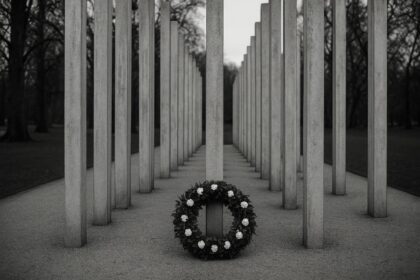Across Britain, local opposition to noise is forcing the closure of public spaces and cultural venues, from youth basketball courts in Walmer to iconic Soho nightclubs, raising urgent questions about the future of vibrant urban life.
Across Britain, a peculiar trend is emerging: vibrant community spaces and nightlife are under threat from local residents and councils adamant about quelling what they deem disruptive noise. The situation escalated recently in Walmer, Kent, where a public basketball court—formerly a haven for local youth—was shut down following complaints from a handful of neighbours about the noise levels during evening games. The local council rationalised the closure by citing an annual cost of £1,200 for maintenance, arguing that this investment was not justified for taxpayer money. However, the social implications of this decision are profound, stirring discontent among those who believe the court served as a vital outlet for local teenagers.
Local opinions on the matter appear sharply divided. While some residents, like 62-year-old Kevin Gordon, voiced frustration over the noise—which he described as “hellish”—others see the closure as misguided. Martyn O’Connor, 56, articulated a common frustration among residents, questioning why individuals would choose to live near a recreational area only to complain about the very activities it was designed to facilitate. Dianne Begg, 77, expressed sorrow over the decision, lamenting the loss of a safe space for young people and suggesting that such draconian measures do not offer a constructive solution to the noise complaints.
This is not an isolated occurrence. Similar narratives are unfolding throughout the country, as revealed by various recent incidents. In Wiltshire, for instance, the owners of Euridge Manor have faced stiff opposition to their plans for hosting events, with one local describing the potential gatherings as “like having a disco in the back garden.” These reactions reflect a growing trend where community voices exert considerable influence over what can be deemed acceptable local conduct, often at the cost of cherished social and cultural institutions.
The nightlife landscape, too, is bearing the brunt of this changing dynamic. In Soho, Jeremy Joseph, owner of the iconic G-A-Y nightclub, announced the establishment’s sale, citing strict licensing regulations and vocal opposition from local residents as contributors to a perceived decline in the vibrancy that once characterized the area. Previously a cornerstone of London’s LGBTQ+ culture, Joseph noted that the current atmosphere starkly contrasts with a time when Old Compton Street epitomised the “gayest street in the gayest capital.” His sentiments echo a broader concern that nightlife—often a source of joy and community for many—is facing extinction due to increasing local hostility towards noise, crowds, and celebratory activities.
The challenges extend beyond nightlife and recreation into sensitive social causes, as exemplified by local opposition to a proposed children’s care home in Brandlesholme. Over 100 residents have objected to plans which they fear would lead to increased noise and harmful behaviour in their quiet neighbourhood. The underlying worry appears rooted in a NIMBY (Not in My Backyard) attitude that prioritises residential tranquillity over the urgent need for community support facilities, demonstrating a reluctance to embrace the potential benefits these organisations can bring to society at large.
Even royal families are not immune to these changing sentiments. King Charles recently intervened to block the establishment of a wedding venue adjacent to Queen Camilla’s residence, citing anxiety over the potential for rowdy celebrations disrupting the peace of their home. This incident illustrates that even in the most affluent circles, there is a growing apprehension toward noise and disruption, suggesting that the struggle over community values and acceptable public conduct transcends socio-economic boundaries.
Indeed, the actions of councils—sometimes driven by a desire to appease constituents—seem to foreshadow a future where the community’s collective identity is shaped by a general aversion to noise and revelry. The implications of such a trajectory raise significant questions about the balance between residential peace and the need for vibrant public spaces that facilitate social interaction and youth engagement. As community hubs continue to face shutdowns and nightlife experiences decline, the future of joy in public life may depend on a more nuanced dialogue around community needs and the very essence of urban living.
Reference Map:
- Paragraph 1 – [1], [2], [3]
- Paragraph 2 – [1], [5]
- Paragraph 3 – [1], [4]
- Paragraph 4 – [1], [6]
- Paragraph 5 – [1], [2]
- Paragraph 6 – [1], [3]
- Paragraph 7 – [1], [4]
Source: Noah Wire Services
- https://www.dailymail.co.uk/news/article-14760721/DEATH-fun-NIMBY-neighbours-council-close-basketball-court.html?ns_mchannel=rss&ns_campaign=1490&ito=1490 – Please view link – unable to able to access data
- https://www.standard.co.uk/news/london/soho-gay-bar-for-sale-heaven-nightclub-b1207035.html – Jeremy Joseph, owner of London’s G-A-Y Bar, has announced its sale, citing Soho’s ‘lost vibrancy’. This follows the temporary closure of his other venue, Heaven nightclub, after a security guard was charged with rape. Joseph expressed concerns over strict licensing conditions and the area’s changing character, stating that Old Compton Street no longer feels like the ‘gayest street in the gayest capital’. ([standard.co.uk](https://www.standard.co.uk/news/london/soho-gay-bar-for-sale-heaven-nightclub-b1207035.html?utm_source=openai))
- https://www.bbc.co.uk/news/articles/c4gwkpk20qyo – G-A-Y Bar in Soho, a prominent LGBTQ+ venue, has been put up for sale by owner Jeremy Joseph, who claims Soho has ‘lost its vibrancy’. This decision follows the temporary closure of Heaven nightclub, another of Joseph’s venues, after a security guard was charged with rape. Joseph criticised local authorities and residents’ groups for being resistant to measures that could benefit the nightlife industry. ([bbc.co.uk](https://www.bbc.co.uk/news/articles/c4gwkpk20qyo?utm_source=openai))
- https://www.thepinknews.com/2025/01/24/g-a-y-bar-sale-heaven-jeremy-joseph/ – Jeremy Joseph, owner of London’s G-A-Y Bar, has announced its sale, stating that Soho has ‘lost its vibrancy’. This follows the temporary closure of his other venue, Heaven nightclub, after a security guard was charged with rape. Joseph expressed concerns over strict licensing conditions and the area’s changing character, stating that Old Compton Street no longer feels like the ‘gayest street in the gayest capital’. ([thepinknews.com](https://www.thepinknews.com/2025/01/24/g-a-y-bar-sale-heaven-jeremy-joseph/?utm_source=openai))
- https://www.standard.co.uk/going-out/bars/gay-late-soho-closing-why-b1123042.html – G-A-Y Late, a Soho nightclub, will close indefinitely on December 10, 2023, due to safety concerns. Owner Jeremy Joseph cited attacks on customers and staff, as well as increased building works in the area, leading to fears that the venue’s entrance or fire exit could become blocked. The venue, which has been operating since the early 1990s, holds a licence until 4am. ([standard.co.uk](https://www.standard.co.uk/going-out/bars/gay-late-soho-closing-why-b1123042.html?utm_source=openai))
- https://www.nme.com/news/music/g-a-y-bar-has-been-put-for-sale-3831811 – Jeremy Joseph, owner of London’s G-A-Y Bar, has announced its sale, stating that Soho has ‘lost its vibrancy’. This follows the temporary closure of his other venue, Heaven nightclub, after a security guard was charged with rape. Joseph expressed concerns over strict licensing conditions and the area’s changing character, stating that Old Compton Street no longer feels like the ‘gayest street in the gayest capital’. ([nme.com](https://www.nme.com/news/music/g-a-y-bar-has-been-put-for-sale-3831811?utm_source=openai))
- https://www.qxmagazine.com/bar-event/g-a-y-bar-to-hit-the-market-a-reflection-on-sohos-changing-landscape/ – Jeremy Joseph, owner of G-A-Y Bar in Soho, has announced its sale, citing Soho’s ‘lost vibrancy’. This follows the temporary closure of his other venue, Heaven nightclub, after a security guard was charged with rape. Joseph expressed concerns over strict licensing conditions and the area’s changing character, stating that Old Compton Street no longer feels like the ‘gayest street in the gayest capital’. ([qxmagazine.com](https://www.qxmagazine.com/bar-event/g-a-y-bar-to-hit-the-market-a-reflection-on-sohos-changing-landscape/?utm_source=openai))













